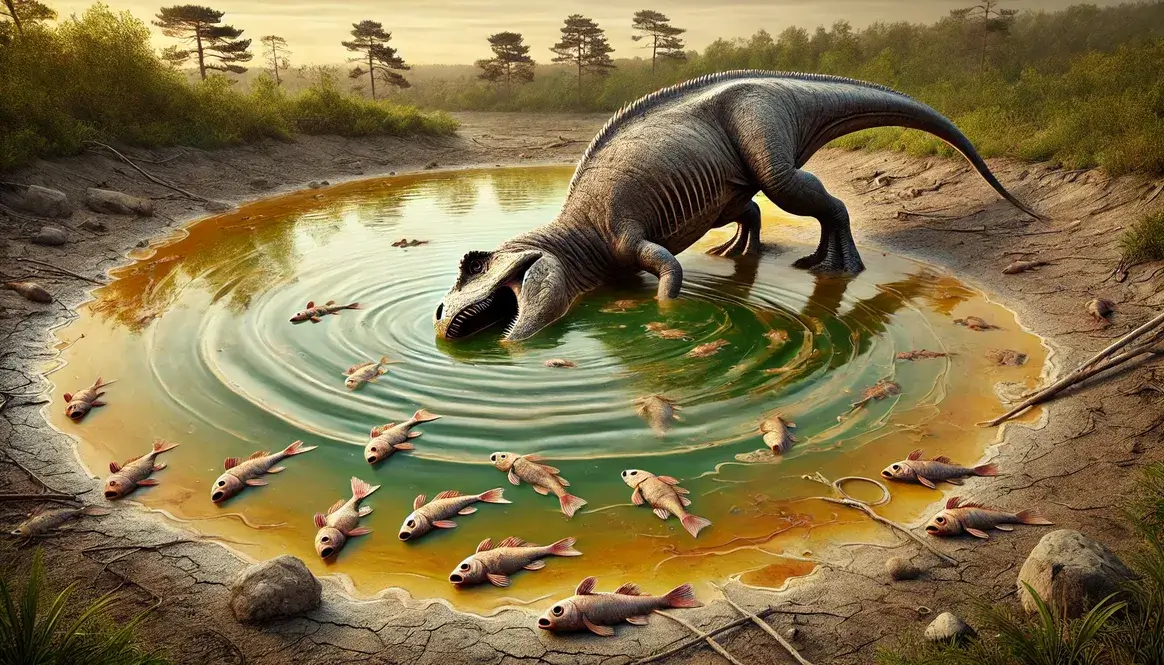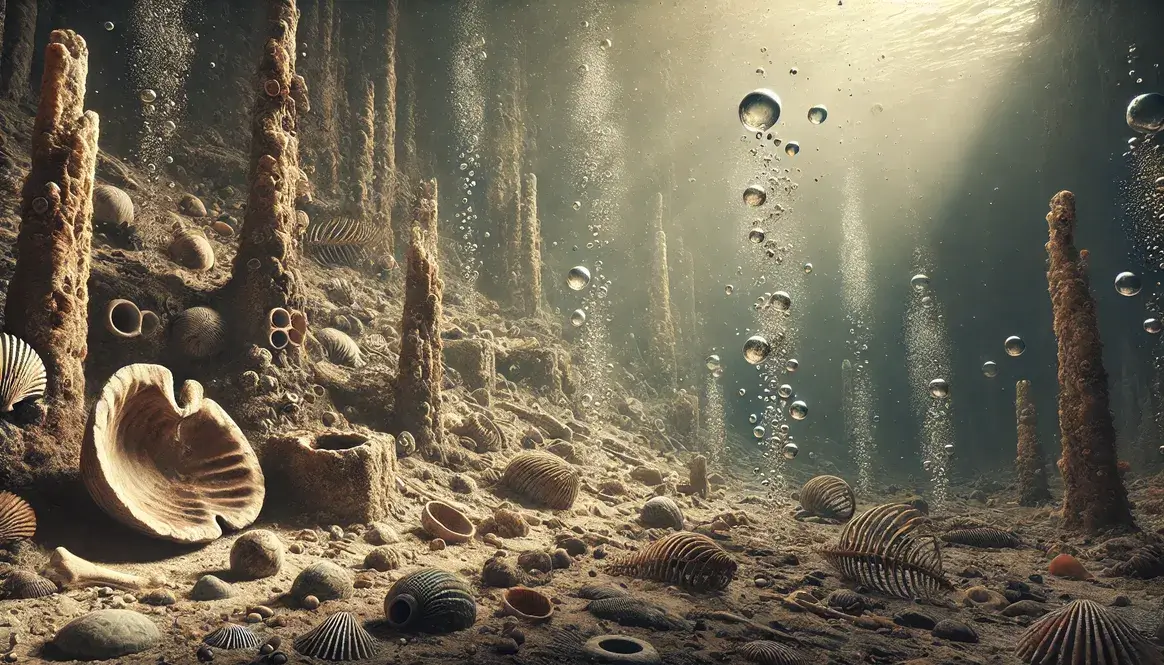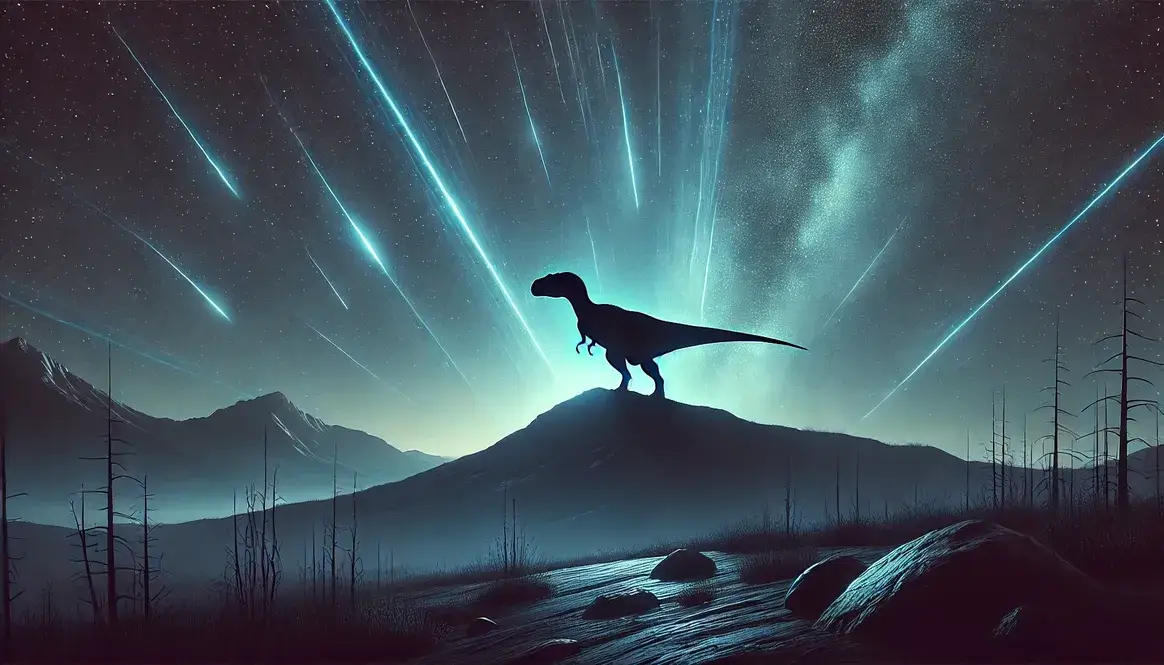Could sickness have played a part in the disappearance of dinosaurs? Scientists studying the end of the dinosaurs examine many possible reasons for their extinction, and diseases stand out as an interesting possibility. Just as sicknesses can affect many animals today, diseases might have created serious problems for dinosaur populations.
| Disease Theory Evidence | Disease Theory Challenges |
|---|---|
| Bone lesions found in fossils | Limited preservation of soft tissues |
| Mass death sites with multiple species | Hard to identify specific diseases |
| Similar patterns to modern disease outbreaks | No direct evidence of viruses or bacteria |
| Signs of infections in dinosaur bones | Difficulty proving widespread impact |
| Stress markers in fossil teeth | Cannot study blood or tissue samples |
Did diseases kill the dinosaurs?
The question of whether diseases killed the dinosaurs requires careful examination. While massive climate changes and the famous asteroid impact played major roles in dinosaur extinction, scientists have found evidence suggesting that diseases might have contributed to their disappearance.
| Disease Evidence Type | What It Tells Us |
|---|---|
| Bone Infections | Many dinosaurs suffered from serious diseases |
| Tooth Abnormalities | Some populations experienced poor health |
| Healed Injuries | Diseases could spread through wounds |
| Growth Disruptions | Illness affected dinosaur development |
Scientists consider diseases as a possible factor in dinosaur extinction for several key reasons:
- Weakened Populations: Many fossil discoveries show that dinosaur populations already faced challenges before their final extinction
- Group Evidence: Scientists have found sites where many dinosaurs died together, suggesting widespread illness
- Bone Changes: Clear signs of infection appear in numerous dinosaur fossils
- Modern Examples: Similar patterns occur when diseases affect animal populations today
The spread of diseases might have made it harder for dinosaurs to survive other challenges. For example, sick dinosaurs would have found it more difficult to:
- Find enough food
- Protect themselves from predators
- Care for their young
- Adapt to environmental changes
Recent studies of dinosaur bone structure reveal that many individuals suffered from infections. These infections left marks that scientists can identify millions of years later. While diseases alone probably didn’t cause dinosaur extinction, they likely made survival much more challenging during an already difficult time.
Scientists continue studying this question because understanding how diseases affected dinosaurs helps us better understand both their extinction and how diseases impact modern animals. Each new fossil discovery adds another piece to this complex puzzle.
Types of Diseases That Could Have Affected Dinosaurs
When ancient ecosystems changed dramatically, dinosaurs became more vulnerable to different types of illnesses. Scientists study modern animals to understand how various diseases might have affected dinosaur populations.
Viral Infections
Much like today’s flu viruses that spread quickly through groups of birds, viral infections could have moved rapidly through dinosaur populations. These viruses might have caused:
- High fevers
- Breathing problems
- Weakness
- Loss of appetite
Modern birds, which are related to dinosaurs, often face viral diseases that spread quickly through their populations. For example, when one bird gets sick, entire flocks can become ill within days.
While viruses don’t leave direct traces in fossils, scientists study patterns of mass deaths in dinosaur groups. These patterns look similar to what happens when modern animals die from viral outbreaks. Young dinosaurs would have been especially vulnerable to viral infections, just as baby birds and reptiles are today.
Bacterial Diseases
Scientists have found clear evidence of bacterial infections in dinosaur bones. These infections left marks that researchers can still see millions of years later.
| Bacterial Disease Sign | Modern Example | Evidence in Fossils |
|---|---|---|
| Bone infections | Osteomyelitis in elephants | Swollen fossil bones |
| Joint problems | Arthritis in birds | Rough joint surfaces |
| Tooth infections | Dental disease in crocodiles | Damaged tooth sockets |
The spread of bacterial diseases through dinosaur communities might have:
- Weakened entire herds
- Made it harder to find food
- Reduced breeding success
- Increased vulnerability to predators
Unlike viruses, bacteria often leave visible damage in bones that scientists can study today. Fossil evidence shows that some dinosaurs survived infections but were permanently weakened. This weakness could have made it harder for dinosaur populations to survive when other problems, like changes in oxygen levels, occurred.
Parasitic Infections
Dinosaur digestive systems likely hosted various parasites, similar to those found in modern reptiles and birds. Scientists have discovered evidence of parasites in fossilized:
- Dinosaur droppings
- Gut contents
- Bone abnormalities
These parasites could drain nutrients from their dinosaur hosts, making them weaker over time. Some parasites might have carried other diseases between dinosaurs, just as mosquitoes and ticks spread diseases today.
Research shows that environmental stress factors made dinosaurs more susceptible to parasitic infections. When dinosaurs became weak from other problems, parasites could cause more serious harm to their health.
Scientists have found tiny holes in some dinosaur bones that match the damage caused by parasites in modern animals. They’ve also discovered fossilized parasites themselves in exceptionally well-preserved specimens. These findings help researchers understand how parasites affected dinosaur health and possibly contributed to their decline.
Large plant-eating dinosaurs might have suffered most from parasites because they:
- Lived in large groups where parasites spread easily
- Ate large amounts of plants that could carry parasite eggs
- Often drank from standing water where parasites lived
- Had long digestive systems where parasites could thrive
How Diseases Spread Among Dinosaurs
The spread of diseases among dinosaurs depended on many factors working together. Scientists study fossil evidence of environments to understand how illnesses moved through dinosaur populations.
Environmental Factors
Changes in the environment played a major role in how diseases spread among dinosaurs. Scientists have found evidence that ancient weather patterns affected how quickly diseases could spread:
| Environmental Change | Effect on Disease Spread |
|---|---|
| Rising temperatures | Made bacteria grow faster |
| Droughts | Forced animals to share fewer water sources |
| Heavy rains | Created more standing water for parasites |
| Changing plant life | Limited food forced animals to eat contaminated plants |
Water sources became particularly dangerous when:
- Many different species shared the same drinking spots
- Bacteria and parasites multiplied in warm, shallow water
- Dead animals contaminated water supplies
- Drought concentrated animals around fewer water sources
The changes in plant life also affected how diseases spread. When regular food sources became scarce, dinosaurs had to eat plants they normally avoided, which might have carried harmful bacteria or parasites.
Population Density
Living in groups helped protect dinosaurs from predators but made them more vulnerable to diseases. Scientists studying dinosaur herd behavior have found that:
Large groups of plant-eating dinosaurs faced special risks:
- Diseases spread quickly through close contact
- Young dinosaurs caught illnesses from older ones
- Shared feeding grounds became contamination points
- Injuries in crowded areas led to infections
When dinosaurs migrated, they could carry diseases to new areas. Evidence shows that different dinosaur species often:
- Used the same migration routes
- Gathered in the same seasonal feeding grounds
- Shared nesting sites
- Crossed paths at water sources
These movement patterns created perfect conditions for diseases to spread between different dinosaur groups and across large areas. Studying dinosaur footprints helps scientists understand these ancient migration routes and how they might have helped spread diseases.
Species Interaction
When different types of dinosaurs came into contact, diseases could jump from one species to another. This happened most often when:
- Predators attacked sick prey
- Different species shared water sources
- Various dinosaurs gathered in feeding grounds
- Small dinosaurs picked parasites off larger ones
Small early mammals might have acted as disease carriers between dinosaur groups, similar to how modern rats and mice can spread illnesses. Scientists think these mammals could have:
| Disease Carrier Role | Impact on Dinosaurs |
|---|---|
| Parasite hosts | Carried ticks and fleas to new areas |
| Virus carriers | Spread viral infections between groups |
| Food contamination | Left droppings in dinosaur feeding areas |
| Nest invasion | Brought diseases to dinosaur nesting sites |
Evidence in the Fossil Record
Studying dinosaur diseases through fossils helps scientists understand how widespread infections might have been. While soft tissues rarely survive, bones can tell us a lot about ancient illnesses. Prehistoric bone samples reveal detailed stories about the health challenges dinosaurs faced.
Bone Abnormalities
When scientists examine dinosaur bones under microscopes, they often find clear signs of disease. Rough, pitted bone surfaces tell stories of long-lasting infections, while unusual bone growth patterns show how dinosaurs’ bodies fought against illness. Some fossils even contain tiny holes created by bone-eating bacteria that attacked dinosaurs while they were still alive.
Growth problems also left lasting marks in dinosaur bones. Scientists can spot uneven bone development and stress lines in teeth, much like rings in a tree trunk, that show periods when dinosaurs struggled with illness. Many fossils contain malformed joints and signs of incomplete healing, suggesting that some dinosaurs lived with chronic health problems.
| Disease Sign | What It Tells Us | Where It’s Found |
|---|---|---|
| Pitted surfaces | Active infection | Leg and hip bones |
| Growth rings | Period of illness | Teeth and bones |
| Bone deformities | Chronic disease | Joints and spine |
| Healing marks | Survived infection | Throughout skeleton |
Examining dinosaur teeth provides especially valuable information about health problems. Missing or damaged enamel suggests periods of severe illness, while irregular growth patterns point to times when diseases interrupted normal development. Scientists have even found evidence of serious infections that spread from teeth into jaw bones.
Most disease evidence appears in leg bones, jaw bones, vertebrae, and hip bones. This pattern tells scientists that many dinosaurs suffered from infections that affected their ability to move and eat properly. Some fossils show that dinosaurs survived serious infections but were permanently weakened, making them more vulnerable to other threats. These survivors often developed unusual bone structures as their bodies worked to repair damage from diseases.
Mass Death Sites
Scientists have discovered places where many dinosaurs died together, which might tell us about diseases that killed large groups at once. The process of fossilization preserved these sites, giving us important clues about what happened.
Mass death sites often show several interesting patterns:
| Site Feature | What It Tells Us |
|---|---|
| Mixed age groups | Disease affected all ages |
| Multiple species | Illness spread between different dinosaurs |
| Similar time of death | Rapid spread of disease |
| Preserved group behavior | Animals died while together |
These sites help scientists understand how diseases might have spread because:
- Many bones show similar signs of illness
- Animals died close together in time
- Different species were affected the same way
- Evidence suggests animals weren’t killed by predators
Challenges in Finding Evidence
Finding proof of ancient diseases presents many difficulties for scientists. The formation of fossils requires special conditions, and evidence of disease can be lost in this process. Imagine trying to solve a mystery when most of the clues have vanished over millions of years.
The biggest obstacle scientists face is soft tissue loss. Viruses and bacteria, which cause many diseases, simply don’t fossilize. Internal organs, skin, and muscles – parts that might show clear signs of illness – disappear during fossilization. Even blood vessels, which could tell us about infections, break down long before fossilization begins.
| Challenge Type | Impact on Research | Scientific Solution |
|---|---|---|
| Soft tissue decay | Loss of disease evidence | Study bone changes |
| Pressure damage | Crushed or altered fossils | Advanced imaging |
| Incomplete remains | Missing disease signs | Compare multiple specimens |
| Chemical changes | Altered evidence | Chemical analysis |
Time and pressure create additional problems for scientists studying dinosaur diseases. The weight of rock layers can crush delicate bone changes that might show signs of illness. Even when fossils survive, disease marks often get erased as rocks press down on them over millions of years. Some fossils break apart, while others get buried so deep that scientists can’t reach them.
Studying ancient bacteria becomes especially difficult because very few dinosaurs become fossils in the first place. Even when scientists find fossils, many disease symptoms might never have affected the bones at all. Plus, most fossils are incomplete, giving scientists only partial information about the dinosaur’s health.
Despite these challenges, scientists continue developing new methods to study ancient diseases. They use powerful microscopes to examine tiny details in fossils and X-rays to look inside rocks without breaking them. Modern technology helps reveal clues about dinosaur diseases that were impossible to spot just a few years ago, giving us a clearer picture of how illnesses affected these ancient animals.
Disease Impact on Different Dinosaur Groups
Different types of dinosaurs faced different disease risks. The way these animals lived and what they ate affected how vulnerable they were to various illnesses.
Large Herbivores
The giant plant-eating dinosaurs faced special challenges when it came to diseases. Studying sauropod fossils has shown scientists that these massive animals often suffered from several health problems at once.
| Health Risk | Reason for Vulnerability |
|---|---|
| Water-based parasites | Had to drink large amounts of water |
| Food contamination | Needed to eat constantly |
| Herd infections | Lived in large groups |
| Joint problems | Carried heavy body weight |
Duck-billed dinosaurs’ teeth show particular evidence of disease:
- Unusual wear patterns
- Signs of infection
- Growth disruptions
- Damaged tooth sockets
These plant-eaters were especially vulnerable because they:
- Gathered in large herds
- Shared feeding grounds
- Used the same water sources
- Had complex digestive systems that could harbor parasites
Predatory Dinosaurs
Meat-eating dinosaurs showed different patterns of disease than plant-eaters. The hunting methods of carnivores exposed them to unique health risks. Their aggressive lifestyle often led to injuries that could become infected and spread disease through their populations.
| Health Risk | Cause | Impact on Hunting |
|---|---|---|
| Fighting wounds | Territory battles | Limited movement |
| Prey infections | Eating sick animals | Weakened hunters |
| Tooth damage | Failed hunting attempts | Difficulty feeding |
| Muscle injuries | Attacking large prey | Reduced success |
Life as a predator carried serious health risks. When hunting went wrong, meat-eating dinosaurs often suffered from infected wounds from fighting with prey or other predators. They could catch diseases directly from eating sick animals, and parasites in meat posed another constant threat. Even broken teeth, a common injury among predators, could lead to dangerous infections that made hunting even harder.
These health problems created ripple effects throughout the ancient ecosystem. When predators became too sick to hunt effectively, their prey populations could grow out of control. This overpopulation meant diseases could spread more easily through crowded groups of plant-eaters. Meanwhile, competing predators would move into new hunting territories, potentially spreading diseases to different areas.
Scientists examining predator fossils have found fascinating evidence of these struggles. Many theropod bones show signs of serious infections that would have made hunting nearly impossible. Some fossils reveal predators that survived with partially healed injuries, suggesting they found ways to keep hunting despite their health problems. These discoveries prove that even the most powerful hunters faced serious challenges from disease, potentially weakening entire populations over time.
Why Disease Alone Might Not Explain Everything
While diseases clearly affected dinosaur populations, scientists believe multiple factors worked together during the extinction period. Volcanic activity effects created conditions that made diseases more dangerous by:
- Weakening dinosaur immune systems
- Reducing food availability
- Creating environmental stress
- Forcing populations to crowd together
| Stress Factor | Effect on Disease Impact |
|---|---|
| Food shortages | Weakened resistance to illness |
| Temperature changes | Made infections spread faster |
| Habitat loss | Increased population density |
| Air quality | Damaged breathing abilities |
Scientists study modern animals to understand how multiple problems can work together. For example, when changing oxygen levels stress animals today, they become more likely to get sick.
What Really Happened to the Dinosaurs?
When we ask “did diseases kill the dinosaurs,” the answer isn’t simple. Disease probably played an important part in dinosaur extinction, but as one piece of a larger puzzle. Just as cosmic ray exposure and other factors contributed, diseases made it harder for dinosaurs to survive during an already difficult time.
The evidence shows that:
- Many dinosaurs suffered from diseases
- Environmental changes made infections worse
- Different dinosaur groups faced varying health challenges
- Multiple factors worked together during extinction
Scientists continue studying fossils to better understand how diseases affected dinosaur populations. Each new discovery helps complete the picture of what happened to these remarkable animals millions of years ago.









